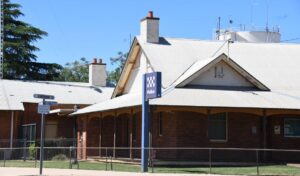
The cost of visiting theme parks in the United States has risen sharply over the past decade, according to a recent study by FinanceBuzz. The analysis, which compares prices from 2015 to 2025, reveals significant increases in both admission and parking fees, highlighting the impact of inflation on the entertainment industry.
In recent years, theme parks have remained popular destinations, attracting millions of visitors eager for thrilling rides and immersive experiences. However, these experiences now come at a higher price. The study illustrates that major parks have seen substantial increases in ticket prices, while smaller parks have raised parking fees to balance their revenue.
Sharp Increases in Admission Prices
The study evaluated single-day passes at 20 of the most frequented theme parks across North America. Currently, the average cost of these passes is approximately $105, representing a remarkable 37% increase since 2015. Notably, the most significant hikes have occurred at Disney’s Hollywood Studios, where prices surged by 79%, and EPCOT, which saw an increase of 72%. Other parks, like the Magic Kingdom and Knott’s Berry Farm, also reported steep rises of 70% and 60%, respectively.
These increases have outpaced the national inflation rate, raising concerns among consumers about the affordability of family outings to these iconic destinations. The dramatic shift in pricing reflects broader economic factors affecting leisure activities.
Parking Costs on the Rise
While major parks have led the charge in ticket price increases, many smaller parks are adjusting their parking fees. Some have even reduced admission prices, only to significantly raise parking costs. For instance, King’s Island in Ohio has experienced a staggering 150% increase in parking rates. Other parks, including SeaWorld Orlando and SeaWorld San Diego, have seen parking fees increase by 119%.
This strategy may help offset losses from lower ticket prices. By elevating parking costs, these parks aim to maintain visitor numbers while managing their overall revenue streams.
Understanding the Factors Behind Price Increases
The rising costs at theme parks are not solely attributed to inflation. Many parks are investing heavily in new attractions and ride enhancements to justify the higher prices. For example, the introduction of themed lands at Hollywood Studios and new rides at EPCOT are part of these investments.
While these improvements may enhance the visitor experience, they also contribute to the overall increase in costs. Parks contend that the enhancements make each visit worthwhile, even as visitors express concerns about rising expenses.
Strategies to Maximize Theme Park Visits
Despite the soaring prices, families can still enjoy theme park visits without overspending. Since 2015, many parks have implemented date-based pricing, which allows guests to find lower-cost admission days. By planning visits around these dates, families can significantly reduce their initial costs.
In addition to strategic planning, leveraging credit card rewards can yield further savings. Points, rewards, and cashbacks can help offset expenses associated with parking and in-park purchases, making visits more financially manageable.
While the current landscape of theme park pricing may deter some families, with careful planning and an understanding of pricing fluctuations, it remains possible to create lasting memories at these beloved attractions.







